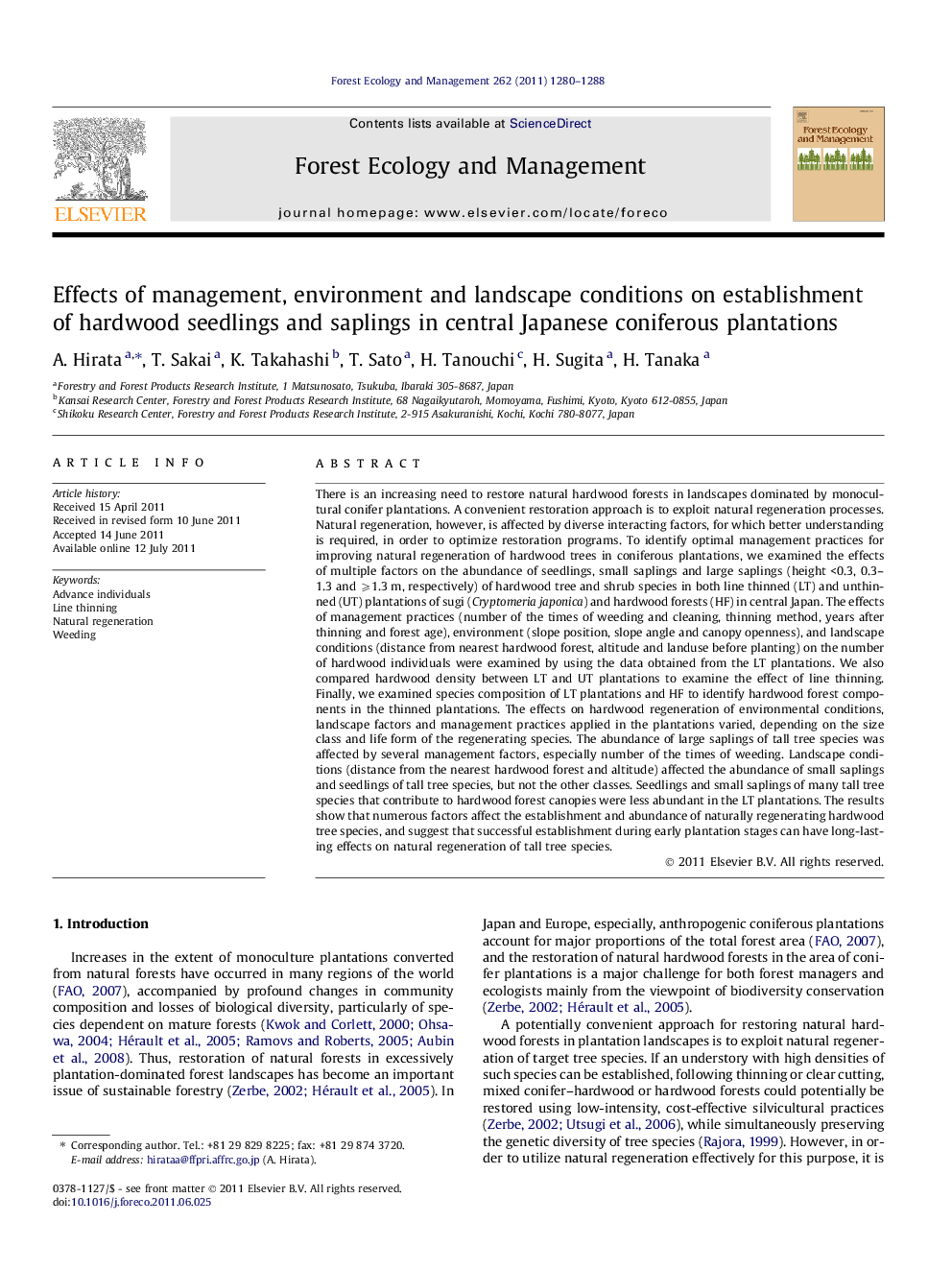| کد مقاله | کد نشریه | سال انتشار | مقاله انگلیسی | نسخه تمام متن |
|---|---|---|---|---|
| 88003 | 159276 | 2011 | 9 صفحه PDF | دانلود رایگان |

There is an increasing need to restore natural hardwood forests in landscapes dominated by monocultural conifer plantations. A convenient restoration approach is to exploit natural regeneration processes. Natural regeneration, however, is affected by diverse interacting factors, for which better understanding is required, in order to optimize restoration programs. To identify optimal management practices for improving natural regeneration of hardwood trees in coniferous plantations, we examined the effects of multiple factors on the abundance of seedlings, small saplings and large saplings (height <0.3, 0.3–1.3 and ⩾1.3 m, respectively) of hardwood tree and shrub species in both line thinned (LT) and unthinned (UT) plantations of sugi (Cryptomeria japonica) and hardwood forests (HF) in central Japan. The effects of management practices (number of the times of weeding and cleaning, thinning method, years after thinning and forest age), environment (slope position, slope angle and canopy openness), and landscape conditions (distance from nearest hardwood forest, altitude and landuse before planting) on the number of hardwood individuals were examined by using the data obtained from the LT plantations. We also compared hardwood density between LT and UT plantations to examine the effect of line thinning. Finally, we examined species composition of LT plantations and HF to identify hardwood forest components in the thinned plantations. The effects on hardwood regeneration of environmental conditions, landscape factors and management practices applied in the plantations varied, depending on the size class and life form of the regenerating species. The abundance of large saplings of tall tree species was affected by several management factors, especially number of the times of weeding. Landscape conditions (distance from the nearest hardwood forest and altitude) affected the abundance of small saplings and seedlings of tall tree species, but not the other classes. Seedlings and small saplings of many tall tree species that contribute to hardwood forest canopies were less abundant in the LT plantations. The results show that numerous factors affect the establishment and abundance of naturally regenerating hardwood tree species, and suggest that successful establishment during early plantation stages can have long-lasting effects on natural regeneration of tall tree species.
► Effects of plantation conditions on the hardwood abundance varied with size class.
► The abundance of seedlings was strongly affected by landscape position.
► The abundance of large saplings was strongly affected by several management factors.
► Establishment during early plantation stages is likely to have long-lasting effects.
Journal: Forest Ecology and Management - Volume 262, Issue 7, 1 October 2011, Pages 1280–1288